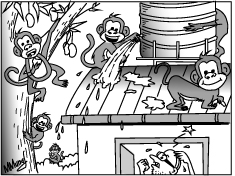Letters
View(s):Norochcholai coal power plant – some unanswered questions
The Sunday Times article on February 2 carries some explanations by officials of the Power and Energy Ministry and the Chinese Company on the problems the Norochcholai power plant has been encountering since its commissioning nearly three years ago.
However, many questions are still unanswered and I would be grateful if any of these two parties could clarify these issues.
The Vice President of the company is quoted as saying that “the negotiations and signing of the agreement were done strictly as per the official procedures”. It is the standard requirement in the purchase of any brand new plant and machinery whether from the manufacturer or from a dealer to provide a set of instruction manuals in English on its operation and maintenance. Was such a set of instruction manuals in English given and if not why? Didn’t the agreement provide for that?
The article also says, “CMEC vouches for the quality of equipment installed at the plant, adding that they are from first class Chinese manufacturers who had been reviewed and verified by the CEB and employer’s consultants before selection”. However, nowhere in the article the supplier claims that the plant purchased is a brand new plant. Could the company vouch that the plant sold was a brand new one?
According to the article, the plant supplied had a configuration much higher than what was required for a “plain 300 MW plant” in order to satisfy local environment protection regulations and the contract price included many items including “several environmental monitoring systems”. Could the supplier please elaborate quantitatively in what respect the plant sold differed from a “plain power plant” for them to charge additional money? Does this statement mean that the “standard” plants manufactured by this company do not have any pollution controls?
Since additional money has been charged for these monitoring systems, I believe these environment monitoring systems should be in place by now. If so, could the CEB kindly tell the public what levels of emissions have been observed during 2013 in respect of oxides of nitrogen, sulphur dioxide and suspended particulate matter (SPM) released into the atmosphere from the plant and whether these are in compliance with the environmental regulations in the country?
The Environmental Impact Assessment (EIA) report of the plant requires that three Ambient Air Quality (AAQ) monitoring stations be established, one in the peninsula and two in and around Puttalam town using continuous monitoring equipment properly calibrated periodically and operated by well-trained persons. These stations are expected to measure the concentration of nitrogen dioxide, sulphur dioxide and SPM, along with several meteorological parameters and submit the reports at least quarterly to the local bodies. Has this been done and if so, what are their monthly mean values for 2013?
The EIA report requires that the deposition rate of particulate matter (originating from ash) be monitored as well, along with an analysis for the presence of heavy metals. Has this been done, and if so, what are their values? According to the International Energy Agency (IEA) Report on Environment and Health Impacts of Electricity Generation, June 2002, coal power plants cause the release of many toxic heavy metals into soil through deposition of ash.
Based on the rates given in this report, the Norochcholai plant once completed with 900 MW output and with the proposed 1000 MW plant at Sampur in operation, will jointly release 4.3 t of zinc, 2.9 t of lead, 1.5 t of mercury, 1.5 t of chromium, 1.4 t of nickel, 1.3 t of copper and 1.0 t of arsenic annually into the soil. Has the CEB examined how these heavy metals once they leach into the water table could affect the health of people? Wouldn’t it be a case of people in the North Central Province already suffering from Chronic Kidney Disease falling from the frying pan to the fire?
Dr Janaka Ratnasiri
Nawala
Galle Road users under steamroller
Several months ago, renovation work on Galle Road from Wadduwa to Ratmalana began, causing severe traffic on that stretch. We thought that since the project was for the benefit of road users, we should adjust our travel plans accordingly.
Later or about the same time, construction began on a stretch at Wellawatte with no regard for the congestion it caused. But I was shocked to see that at the same time, renovation work on Duplication Road was also started.
According to an article published in the Sunday Times, the work is not aimed at easing or streamlining traffic flow. Instead it is to beautify this stretch. This is hilarious. When will they realise that “real” measures need to be taken to address worsening traffic congestion?
The Government has plans to double the per capita income by 2016 and reach the US$ 4,000 mark. Surely, the authorities won’t expect Sri Lankans to buy flying machines for transport as their purchasing power increases. Once the beautification is over they can probably break the roads again to widen them.
On the practical side, has the Road Development Authority or the Ministry of Defence or whoever is responsible for the chaos, carried out any traffic planning before making a mess of one of the busiest roads? I travel daily by bus – a distance of 33 km — and it takes two and a half hours. This means the bus moves at 13km/h. I could take a bullock cart instead. It’s time the authorities came up with proper traffic plans or expedited the construction work.
It is extremely exasperating to see the Government’s obsession with “beautification” at the expense of grave inconvenience and great cost to the public and to see that all becomes obsolete in no time.
Concerned Citizen
Dilini
Via e-mail
Politicians must unite to solve poaching crisis
The harm caused to Sri Lanka’s marine resources by Indian fishermen is an open-secret. The magnitude of the problem is such that even the statistics of the Jaffna estuary (inland waters) cannot be accurately taken for research purposes.
Despite differences, politicians in Tamil Nadu are united when it comes to issues involving Sri Lanka. However, most of our opposition politicians are silent on the poaching issue.
It is high time that all Sri Lankan politicians took a common stand and helped solve this crucial problem through diplomatic dialogue before it seriously affects the country, especially the poor people in the Northern Province.
Udeni Edirisinghe
University of Peradeniya
Save us from this monkey invasion
Our area on Katugastota Road, Kandy — about a kilometre from the tunnel towards Katugastota in the Palle Mahaiyawa area — has some 25 houses on either side of the narrow uphill road.
Many of the residents are away during the greater part of the day. Children are at school and a few senior citizens, pensioners like me, remain in a few of the houses. Fruit trees such as mango, pomegranate, plantain, papaw and king coconut grow well in this area and many houses have them in their gardens.
Twenty to 30 monkeys come to the area and indulge in wanton destruction. They do not spare even the raw fruits; they strip the papaw trees of all the leaves. What is worse is that they go right to the top of the houses and open the taps of the water tanks and throughout the day water runs awaste. The monkeys have even removed the tight lids of water tanks, unscrewed the ball valves of the floats and thrown them out. Doors or windows cannot be kept open, because the monkeys come in, searching for food and destroy whatever they find. Telephone calls to the WildLife Conservation Department to drive the monkeys to a settlement have been of no avail. The thick forest of Uduwa-ttekelle has been partly denuded for hotels and roadways paving the way for this monkey invasion.
This letter is an SOS to the Minister in Charge of Wildlife.
S. Thambyrajah
Kandy



